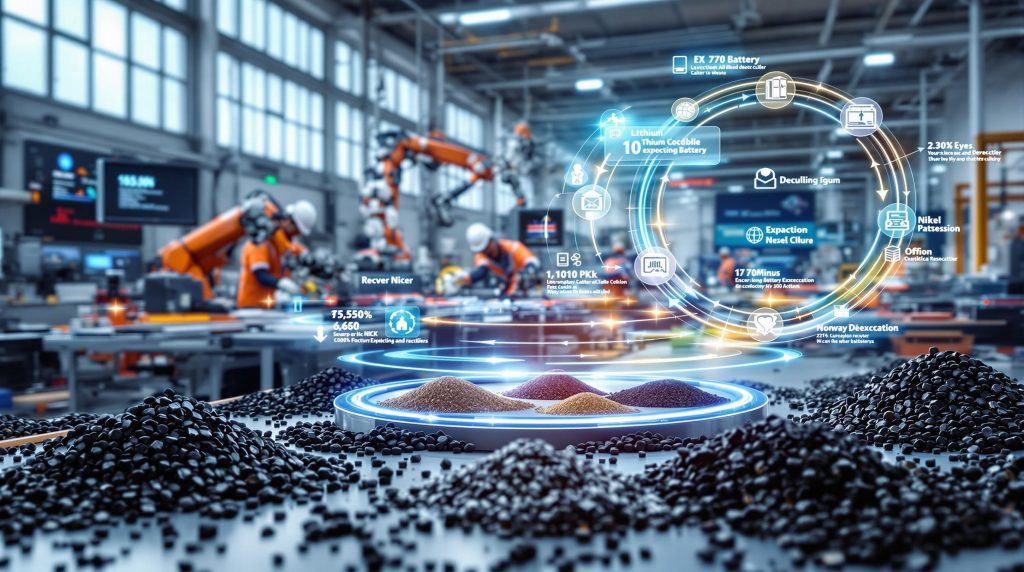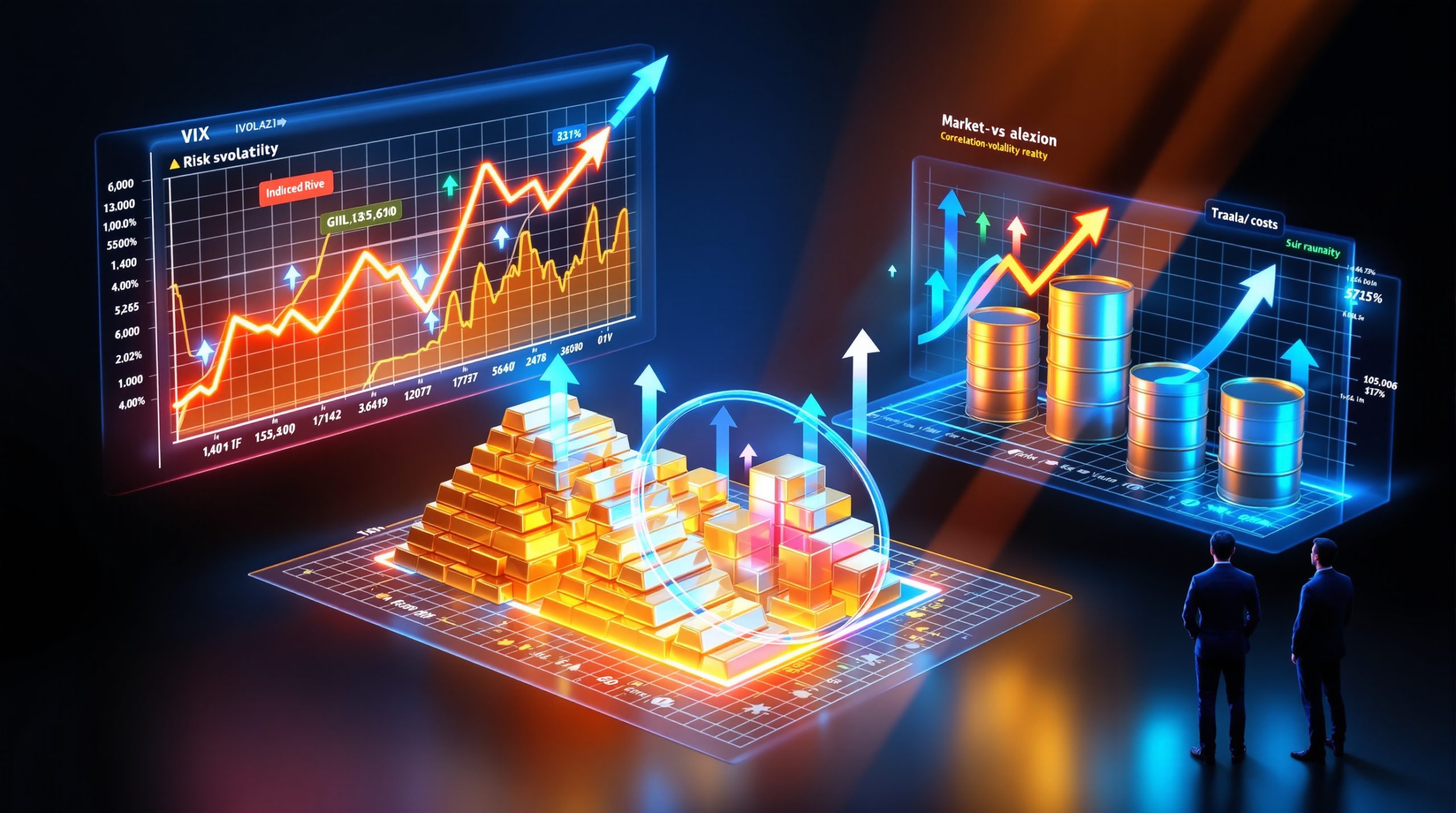Norway's EV Battery Recycling Revolution: A New Collaborative Approach
Norway has long been at the forefront of electric vehicle adoption, creating a unique challenge as the first wave of mass-market EVs approaches end-of-life. To address this growing concern, the Norwegian automotive industry has developed an innovative solution that could serve as a model for nations worldwide.
What is Autoretur Battery Recycling and Why Was it Created?
In a groundbreaking development for sustainable transportation, Norway has established its first collaborative electric vehicle battery recycling initiative. This marks a significant milestone in the country's commitment to environmental responsibility and circular economy principles.
The Formation of Norway's First Joint EV Battery Recycling Initiative
Autoretur Battery Recycling (ABR) was established by the Norwegian Association of Vehicle Importers (Bilimportørenes Landsforening, BIL) through Autoretur AS, representing a unified industry approach to a growing challenge. In August 2025, ABR received official approval from the Norwegian Environment Agency to operate as an Extended Producer Responsibility (EPR) organization, with operations set to commence on November 1, 2025.
This initiative directly addresses the unique challenges posed by Norway's world-leading electric vehicle market. As the country with the highest EV penetration rate globally, Norway faces an unprecedented volume of high-energy batteries requiring proper end-of-life management.
"With the approval in place, we can offer a comprehensive and safe solution for the collection, handling and treatment of high-energy batteries. This is circular economy in practice," explains Erik Andresen, CEO of ABR, highlighting the organization's commitment to sustainability.
Meeting Critical Environmental and Regulatory Needs
ABR fulfills essential Extended Producer Responsibility requirements for vehicle importers operating in Norway. These regulations mandate that manufacturers and importers take responsibility for products throughout their entire lifecycle, including end-of-life disposal and recycling.
High-energy batteries present unique environmental risks if improperly handled, including potential contamination from heavy metals and electrolytes. Additionally, damaged batteries can pose serious fire hazards during transportation and storage, requiring specialized handling protocols.
A key objective of ABR is establishing a coordinated approach to recovering valuable metals like lithium, cobalt, nickel, and manganese for reuse in new battery production. This recovery process significantly reduces the environmental impact of battery manufacturing by decreasing the need for new raw material extraction.
The initiative also creates a standardized system for statutory reporting and regulatory compliance, simplifying administrative burdens for vehicle importers while ensuring consistent environmental standards.
How Will Norway's EV Battery Recycling System Work?
Norway's comprehensive approach to EV battery recycling combines existing infrastructure with specialized processes designed specifically for high-energy battery management, creating an efficient nationwide system.
Projected Processing Capacity and Growth
ABR is preparing for substantial growth in battery processing requirements over the coming decade. The system is designed with initial capacity to handle up to 50,000 used high-energy batteries annually by 2030—a figure that industry projections indicate will be necessary to manage the first major wave of EV batteries reaching end-of-life.
As electric vehicle adoption continues and early EVs age, this demand is expected to increase dramatically. ABR anticipates volume growth exceeding 100,000 batteries annually by 2035, representing a 100% increase in just five years.
To efficiently manage this volume, ABR will utilize Autoretur's existing nationwide logistics network, leveraging established collection points and transportation systems already familiar to automotive retailers and service centers across Norway.
The recycling process will implement specialized techniques for safe battery dismantling and material recovery, including:
- Discharge protocols to safely remove remaining electrical energy
- Disassembly processes for various battery designs and formats
- Mechanical and chemical separation of valuable materials
- Refinement of recovered metals to battery-grade quality
Operational Framework and Responsibilities
ABR will provide centralized management of collection, handling, and treatment processes across Norway. This includes developing comprehensive tracking and traceability systems to monitor each battery's journey from vehicle removal through final material recovery.
The organization will handle all statutory reporting to the Norwegian Environment Agency, ensuring consistent compliance with environmental regulations and producer responsibility requirements.
By integrating with existing vehicle recycling infrastructure, ABR maximizes operational efficiency while minimizing environmental impact. Harald J. Andersen, CEO of BIL, notes that this approach "will enable efficient operations with reduced emissions while guaranteeing safe handling."
Why is a Coordinated Battery Recycling System Crucial for Norway?
Norway's position as the global leader in electric vehicle adoption creates both opportunity and urgency in developing effective battery recycling solutions. The country's pioneering role in transportation electrification means it must also pioneer sustainable end-of-life strategies.
The Accelerating Need for Battery Management Solutions
Norway leads Europe in electric vehicle adoption rates, with EVs representing over 80% of new car sales in recent years. This market transformation has created an unprecedented concentration of high-energy batteries that will eventually require proper disposal and recycling.
The first wave of mass-market EVs sold in Norway is now approaching the end-of-life stage. While EV batteries typically last 8-15 years depending on usage patterns, early models are beginning to require replacement or decommissioning.
Industry projections indicate a sharp increase in discarded high-energy batteries over the next five years. As Andresen explains, "This makes it absolutely crucial to put in place a system that ensures safe and efficient collection and treatment of used batteries from electric vehicles."
Current infrastructure for handling specialized battery waste at scale remains limited, creating potential bottlenecks as volumes increase. ABR addresses this gap by developing dedicated facilities and processes before the anticipated surge in end-of-life batteries.
Environmental and Safety Considerations
High-energy batteries pose unique environmental risks if improperly disposed of. Components may contain potentially hazardous materials that require careful handling to prevent soil or water contamination.
Flammability concerns represent another critical safety factor. Lithium-ion batteries can ignite if damaged, presenting significant challenges for transportation, storage, and processing. ABR will implement specialized handling and storage protocols to mitigate these risks.
Perhaps most importantly, proper recycling enables recovery of valuable materials including lithium, cobalt, nickel, and graphite—resources that are both economically valuable and environmentally intensive to extract. Recycling these materials significantly reduces the carbon footprint of battery production, with studies suggesting up to 50% lower emissions compared to using virgin materials.
What Benefits Does the Joint Recycling Initiative Offer?
The collaborative nature of ABR creates numerous advantages over fragmented approaches to battery recycling, benefiting industry participants, the environment, and the broader Norwegian economy.
Advantages for Vehicle Importers and Manufacturers
ABR provides cost-effective compliance with Extended Producer Responsibility requirements, allowing vehicle importers to meet regulatory obligations without developing individual recycling programs. This collective approach creates economies of scale that would be impossible for single companies to achieve.
The initiative significantly reduces administrative burden through centralized reporting, eliminating duplicate efforts across multiple importers and streamlining regulatory compliance.
Participating companies also enhance their sustainability credentials, demonstrating commitment to responsible product lifecycle management. As consumer awareness of environmental issues grows, this represents an increasingly important competitive advantage.
Access to an established nationwide collection network simplifies logistics for all participants, reducing transportation costs and associated emissions while ensuring consistent service quality throughout Norway.
Environmental and Economic Impacts
ABR exemplifies circular economy principles in the EV supply chain, creating closed loops for critical materials rather than single-use consumption. This approach preserves resources for future generations while reducing environmental impact.
The system reduces reliance on raw material extraction through material recovery, particularly important for minerals like cobalt and lithium that face supply constraints and environmental challenges in primary production. The direct lithium extraction technologies being developed globally could complement these recycling efforts.
By optimizing logistics and processing, the initiative achieves lower emissions compared to fragmented recycling approaches or primary material extraction. Centralized facilities can implement best-in-class environmental controls while minimizing transportation distances.
The recycling ecosystem also creates specialized jobs in the battery recycling sector, developing expertise in an emerging industry with global growth potential. These positions range from logistics and processing roles to advanced technical and research positions focused on improving recovery rates.
How Does Norway's Approach Compare to Global Battery Recycling Efforts?
Norway's battery recycling initiative represents a distinctive approach shaped by the country's unique market conditions and cooperative industry culture, potentially offering lessons for other regions facing similar challenges.
Norway's Position in the Global Battery Recycling Landscape
Norway stands among the first countries to establish a comprehensive nationwide EV battery recycling system, a position consistent with its leadership in electric vehicle adoption. This proactive stance allows Norway to develop solutions before reaching critical waste volumes, unlike regions that may face unexpected surges in end-of-life batteries.
The collaborative industry-led approach differs from government-mandated systems in other regions. While regulatory requirements provide the framework, the implementation remains industry-driven, potentially offering greater flexibility and efficiency than purely governmental approaches.
Norway's system launches ahead of expected EU battery recycling regulations, positioning the country as a potential model for other European nations. The Norwegian approach may influence broader European standards as the EU finalizes its own battery recycling frameworks.
As other countries with growing electric vehicle fleets observe Norway's experiences, the ABR model could inform international best practices. Early lessons from Norway's system may help other regions avoid potential pitfalls and accelerate their own recycling program development. For instance, the Chinese recycling breakthrough demonstrates alternative approaches to similar challenges.
Comparative Approaches to Battery Recycling
Battery recycling approaches vary significantly across markets:
| Approach Dimension | Norway (ABR) | Alternative Models |
|---|---|---|
| Organization | Industry-led collaboration | Government-operated systems |
| Processing Structure | Centralized coordination with distributed collection | Fully centralized or fully distributed systems |
| Producer Responsibility | Unified industry solution | Individual producer programs or government taxation |
| Material Recovery Focus | Balanced recovery of all valuable materials | Selective focus on highest-value materials only |
Each approach offers different advantages and challenges, with optimal strategies varying based on geography, market structure, and existing infrastructure. Norway's collaborative model may prove particularly suitable for markets with high EV adoption rates and strong industry cooperation.
What Challenges Must the Initiative Overcome?
Despite careful planning, Norway's battery recycling initiative faces several significant hurdles that will require ongoing innovation and adaptation to address effectively.
Technical and Logistical Hurdles
Safe transportation of potentially damaged or degraded batteries presents a primary challenge. ABR must develop specialized containers, vehicles, and handling protocols to prevent thermal events during collection and transport.
The wide variety of battery designs across vehicle manufacturers creates complexity in disassembly processes. Unlike standardized lead-acid batteries, EV battery packs vary significantly in configuration, cooling systems, and cell architecture, requiring adaptable dismantling approaches.
Effective sorting methods for different battery chemistries represent another technical challenge. Lithium iron phosphate (LFP), nickel manganese cobalt (NMC), and other chemistries require different recycling processes for optimal material recovery.
Optimizing recovery rates for critical materials remains an ongoing challenge. Current recycling technologies typically recover 50-80% of battery materials, but improving these rates requires continued process refinement and technological development. The Livium recycling facility in Australia offers insights into innovative approaches to this challenge.
Economic and Regulatory Considerations
ABR must balance processing costs against material recovery value to ensure long-term economic sustainability. This equation depends on volatile commodity prices for recovered materials like cobalt, nickel, and lithium.
Adapting to evolving battery technologies and designs presents another ongoing challenge. As manufacturers introduce new cell chemistries and pack designs, recycling processes must continuously evolve to handle these variations effectively.
Maintaining compliance with changing environmental regulations requires vigilance and flexibility. As understanding of battery recycling impacts grows, regulatory requirements may become more stringent, necessitating process adjustments.
Coordinating activities across multiple vehicle manufacturers and importers introduces organizational complexity. Different stakeholders may have varying priorities and concerns, requiring careful governance to maintain alignment.
What Does This Mean for Norway's Circular Economy Goals?
Norway's battery recycling initiative represents a cornerstone of the country's broader circular economy strategy, with implications extending beyond immediate waste management concerns.
Advancing Sustainability Through Material Recovery
The ABR system creates closed-loop systems for critical battery materials, allowing recovered resources to reenter the manufacturing supply chain. This approach embodies circular economy principles by transforming potential waste into valuable inputs.
Material recovery significantly reduces the environmental impact of electric vehicle lifecycle emissions. By displacing virgin material extraction, battery recycling can lower the carbon footprint of new battery production by 30-50%, according to industry estimates.
The initiative establishes domestic capacity for processing valuable resources, reducing Norway's dependence on international material flows and creating greater resource security. This domestic processing capability becomes increasingly strategic as global competition for battery metals investment intensifies.
ABR directly supports Norway's broader sustainability and carbon reduction targets by addressing a potentially significant waste stream while reducing embedded carbon in new electric vehicles.
Long-Term Implications for Norway's Green Transition
By building infrastructure to support continued EV adoption, Norway removes a potential barrier to further transportation electrification. Consumers and manufacturers can proceed with confidence knowing that end-of-life solutions exist.
The initiative fosters development of expertise in advanced recycling technologies, positioning Norway at the forefront of a growing global industry. This knowledge base may create additional economic opportunities beyond domestic recycling operations.
ABR creates a model for sustainable management of clean energy technologies, potentially applicable to other sectors like solar panels, wind turbines, and energy storage systems that will eventually require end-of-life solutions.
The knowledge and technology developed through Norway's battery recycling program offers potential for export to other markets, creating economic opportunities while advancing global sustainability goals.
Frequently Asked Questions About EV Battery Recycling
As battery recycling systems develop, consumers and industry stakeholders often seek clarity on processes, responsibilities, and environmental impacts. The following questions address common concerns about EV battery recycling.
Common Questions About Battery Recycling Processes
What happens to an EV battery at the end of its life?
End-of-life EV batteries typically undergo a multi-stage process:
- Assessment for potential second-life applications in stationary storage
- Discharging to safe energy levels for handling
- Disassembly into component parts (modules, cooling systems, electronics)
- Physical or chemical processes to separate valuable materials
- Refinement of recovered materials for reuse in manufacturing
How are valuable materials recovered from used batteries?
Recovery typically involves:
- Mechanical processes like crushing and separation
- Hydrometallurgical methods using chemical solutions to isolate specific elements
- Pyrometallurgical approaches using high temperatures to separate materials
- Advanced sorting technologies to segregate different battery components
What percentage of battery materials can be recycled?
Current technologies can recover:
- 95-99% of cobalt, nickel, and copper
- 70-80% of lithium (with newer processes achieving higher rates)
- 50-60% of graphite and electrolyte components
- Nearly 100% of aluminum from battery casings
Recovery rates continue to improve as technologies advance and economic incentives increase. Some recent lithium refinery insights show promising developments in material recovery efficiency.
Are there environmental risks associated with battery recycling?
Responsible recycling operations manage several potential risks:
- Emissions control for any thermal processes
- Wastewater treatment for hydrometallurgical methods
- Dust containment during mechanical processing
- Proper handling of any unrecovers hazardous components
Well-designed facilities implement multiple containment systems and monitoring to ensure environmental protection.
Consumer and Industry Concerns
How does battery recycling affect the total environmental impact of EVs?
Effective recycling significantly reduces lifecycle environmental impact by:
- Lowering carbon emissions associated with new battery production
- Reducing primary resource extraction and associated habitat disruption
- Decreasing energy requirements compared to primary material production
- Preventing potential contamination from improper disposal
Studies indicate that recycled materials in batteries can reduce production carbon footprint by 30-50%.
What responsibilities do vehicle owners have regarding battery disposal?
Vehicle owner responsibilities typically include:
- Returning end-of-life vehicles or batteries to authorized collection points
- Ensuring proper deregistration of vehicles according to national requirements
- Following safety guidelines for handling damaged vehicles
- Potentially paying recycling fees if not included in vehicle purchase price
ABR simplifies these requirements by providing clear guidance and accessible collection points throughout Norway.
How will recycling costs affect vehicle pricing and ownership?
Recycling costs may impact vehicle economics through:
- Producer responsibility fees included in initial vehicle pricing
- Potential deposit-refund systems for battery returns
- Value recovery that may partially offset processing costs
- Economies of scale that reduce per-battery handling expenses as volumes increase
Industry collaboration through ABR helps minimize these costs through operational efficiency.
What happens to batteries that aren't suitable for recycling?
Batteries with unusual damage or contamination undergo:
- Specialized assessment to determine handling requirements
- Stabilization procedures to address any safety concerns
- Alternative treatment methods appropriate to their condition
- Secure disposal of any portions that cannot be safely recycled
ABR's comprehensive system includes protocols for managing these exceptional cases safely.
The Future of Battery Recycling in Norway
As Norway's battery recycling initiative develops, it will likely evolve to address emerging challenges and opportunities. Potential future developments include increased automation in disassembly processes, advanced material recovery technologies, and integration with expanding battery manufacturing capacity within Europe.
The experiences gained through ABR will provide valuable insights not only for Norway but for countries worldwide facing similar challenges as [electric vehicle adoption accelerates](https://www.electrive.com/2025/
Ready to Catch the Next Major ASX Resource Discovery?
Discovery Alert's proprietary Discovery IQ model scans daily ASX announcements to identify significant mineral discoveries before they hit mainstream coverage, giving you a potential market advantage. Explore why major mineral discoveries can lead to exceptional returns by visiting Discovery Alert's dedicated discoveries page and position yourself ahead of the market.




